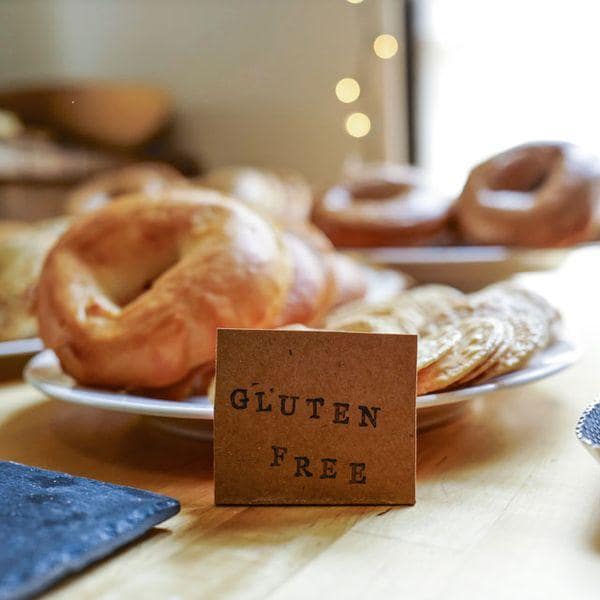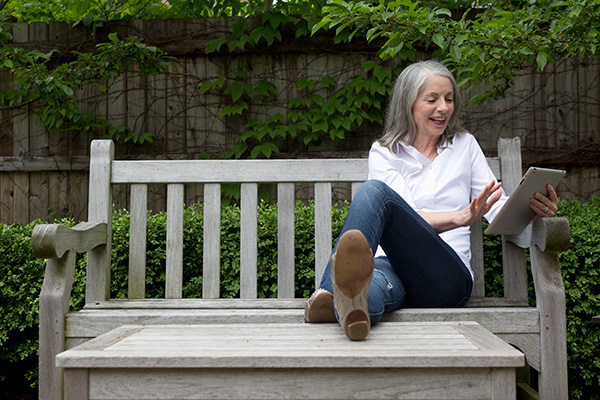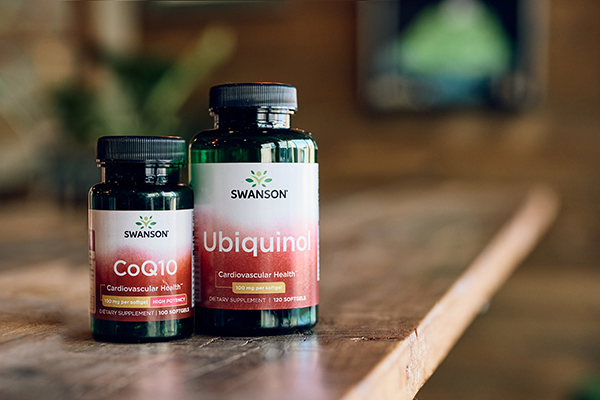If you are sensitive to gluten or you’ve decided to eliminate gluten from your diet for any other reason, it may seem like gluten is in almost everything at first. Thankfully, there are still plenty of delicious foods you can eat while following a gluten-free diet—you just need to know where to look.
We’ve put together this guide for going gluten free to offer tips and helpful information for anyone making a transition to gluten-free living.
What is Gluten, Anyway?
Gluten is a family of proteins that helps provide nourishment to wheat, rye, barley and other cereal grains during germination. The gluten in grain plants affects the elasticity of the dough for our baked goods.1 Gluten also helps dough rise, acts as a binding agent and provides a chewy texture to baked foods.
Some grains do not contain gluten, including wild rice, brown rice, buckwheat, millet, sorghum, quinoa, corn (cornmeal) and buckwheat. Oats contain a protein called avenin, which is similar to gluten, but many people with gluten sensitivities can tolerate oats if they are not produced in a facility that handles other grains that include gluten.1,2
People with gluten sensitivities should check product labels to make sure the oats they choose are truly gluten free. You’ll find a longer list of gluten-free foods near the end of this article
Why Go Gluten Free?
There are several reasons people go gluten free. Some make the transition at the recommendation of their physicians due to sensitivities or intolerances to gluten. For people with those sensitivities, eating it can lead to unpleasant gastric disturbances as well as other symptoms. But for others, the decision to go gluten free is simply a matter of personal choice, part of an effort to eat a cleaner diet or lose weight.
If you’re going gluten free at the recommendation of a physician or dietician, that’s great—you are most likely on your way to a happier, healthier you. But if you are thinking about going gluten free to pursue cleaner eating or a healthier diet, you should know that it isn’t right for everyone. It’s always best to consult with a dietician before making the transition. Gluten and wheat products aren’t necessarily bad for you unless you have an intolerance.
Either way, if you remove gluten from your diet, you’ll still need to make sure you’re eating plenty of nutrient-dense, fiber-rich foods. Whole grains are an abundant source of dietary fiber which we need for healthy bowels, so be sure to compensate for the missing fiber by getting more from other sources like fruits, vegetables, brown rice and beans. Also, you should consider supplementing your diet with a gluten-free multivitamin from real food sources to fill in nutritional gaps.
Gluten-Free Benefits
People with certain gluten-related health concerns may experience strong, sometimes damaging gastrointestinal symptoms when they eat foods containing gluten.1 So, the primary benefit for those individuals would be to ease their symptoms.
Individuals that are sensitive to gluten sometimes experience bloating, gas and other digestive discomforts that may be calmed by removing gluten from the diet. But gluten isn’t the only food sensitivity that could result in these symptoms, so always check with a doctor if you believe you have a gluten sensitivity.
According to a survey conducted by Consumer Reports, other benefits cited from going gluten free include improved digestion and gastrointestinal function, healthy weight loss, increased energy, lower blood lipid levels, and a stronger immune system, although there is very little research that supports those claimed benefits.3
Weight loss is a frequently-cited benefit of going gluten free, but experts say any weight loss from going on a gluten-free diet is most likely related to a reduction in calories from cutting out foods that contain gluten, rather than being directly linked to gluten proteins.4 Also, higher energy levels may be related to eating a healthier diet overall, since many healthy foods do not contain gluten.
Gluten-Free Tips: How to Go Gluten Free
Going gluten free takes some effort and planning, especially at first. But before you know it, your gluten-free lifestyle will feel natural. Here are five tips for getting started.
1. Check Your Cupboards for Gluten
Unless everyone in your home is going on a gluten-free diet, you might not be able to eliminate gluten from your pantry completely. But you can still designate a gluten-free zone in your pantry. The size of that zone will depend on your family and lifestyle.
If you can eliminate gluten from your home, that will probably make it easier for you. If you can’t, choose a cabinet or shelf that is strictly reserved for foods containing gluten and keep the rest of your pantry free of gluten.
If you do most of the cooking in your home, going gluten free won’t always mean that you need to prepare special meals for everyone. There’s a good chance no one will even notice the lack of gluten in your recipes if you don’t mention it!
For general tips on stocking a healthy pantry, read Pack Your Pantry: How to Make a Real Food Pantry.
2. Do Your Research
Whether you have a health concern related to gluten or are going gluten free for a lifestyle change, you’ll need to do some research. Get familiar with how to read nutritional labels so you can check for gluten and other ingredients you want to avoid. Keep in mind that just because a product package says it is gluten free doesn’t mean it’s good for you. Junk food is still junk food, even if it’s gluten free!
Research which foods contain gluten and which foods are naturally gluten free. It might be helpful to print out a gluten-free food list to keep with you while you shop and plan your meals in advance with gluten-free recipes.
Gluten-Free Food List
Just to get you started, here are some foods that are naturally gluten free.
- Fruits and vegetables
- Meat and poultry
- Fish and seafood
- Dairy products
- Beans, nuts and legumes
- Rice
- Corn and cornmeal
- Soy
- Quinoa
- Flax
- Chia
- Nut flours
- Tapioca
- Some oats (make sure the label says gluten free)
Foods with Gluten
Many cereal grains contain gluten, but it can also hide in some unexpected places. Some foods that would be naturally gluten free are prepared in facilities where foods containing gluten are also handled, which may result in contamination. Also, many processed foods contain gluten, some of which you may not expect. Doing research and reading labels is very important for maintaining a gluten-free diet. Some foods and ingredients containing gluten include:
- Wheat, wheat germ and wheatgrass
- Barley
- Rye
- Bulgur
- Semolina
- Couscous
- Spelt
- Farina
- Graham flour
- Triticale
- Matzo
- Cereal
Gluten may also be in these items so check labels:
- Malt flavorings
- Bouillon cubes
- Soups
- Salad dressings and marinades
- Some imitation meats
- Egg substitutes
- Some non-dairy creamers
- Gravy
- Ice cream if it contains mix-ins like cookie dough
- Beer
- And more, so always read product labels!
3. Don't be Afraid to Eat Out
Going gluten free at restaurants is definitely possible! Restaurants are almost always willing to accommodate diners on gluten-free diets. If a gluten-free menu isn’t presented at the table, ask your server if they have one. As more and more people adopt a gluten-free lifestyle, many restaurants now label items on the menu or have a separate gluten-free menu available upon request.
If those options aren’t available, order modified versions of menu items like a burger without a bun. Ask if gluten-filled sides can be substituted for veggies or removed completely. It’s also very helpful to look up the menu online before heading out, so you have an idea of your options beforehand.
If you have a gluten-related health concern, don’t be afraid to let the restaurant know and request special care be taken with your food. There is still a risk of some gluten making its way into your food since so many foods are prepared in restaurant kitchens, so be aware of that and communicate with the restaurant if you are concerned. If you have a strong reaction to gluten, talk with the restaurant in advance.
While many restaurants are happy to accommodate dietary restrictions, and fully understand what that means, some restaurants aren’t aware that gluten-free menu items can’t be fried in the same fryer as items containing gluten, or exposed to the same prep areas unless the surfaces were thoroughly cleaned between food items. But you shouldn’t have to live in fear or avoid restaurants altogether. By asking questions and requesting care during the handling of your food, you can do your best to avoid gluten while still dining out.
4. Stick with It
If you have gluten intolerances or sensitivities, you may feel better a week or two after cutting out gluten. But for some, the improvements might not be obvious at first. It also takes at least 21 days to make a new habit, and maybe a little longer if you find the change challenging.5
So, stick with it! If you aren’t noticing a difference after a few weeks, make sure you’re keeping a close eye on hidden gluten that may be in some foods without you knowing it. Be sure to also talk with your doctor about any ongoing concerns.
Depending on your diet and lifestyle prior to going gluten free, the change might be easier or more difficult for you. But to really get (and keep) any benefits of going gluten free, you’ll need to stick with it long-term.
5. Be Prepared
At some point in your gluten-free journey, you may find yourself in a place without gluten-free options. Make sure you’re prepared for those moments so you don’t get hungry. Keep a stash of convenient options in a specific spot at home, at your desk, in your car (weather permitting) or in your bag. Fruits like bananas and apples are always good options. They’re easy to carry and pair well with nut butter.
Plus, at Swanson we carry over 7,000 gluten-free products, including gluten-free grocery items like Blueberry Gluten Free Breakfast Bars and protein bars like Brownie Crunch High Protein Bars.
We also have a whole section of our recipe collection devoted to gluten-free recipes. Try some out and decide on a few go-to meals that you know you’ll love. And don’t be afraid to try new things! You might also want to check out Your Essential Guide to Gluten-Free Flours for options that will help you continue to enjoy baked goods while on your gluten-free diet.
Still hungry to learn more about gluten-free options? Check these out: Your Essential Guide to Gluten-Free Flours and Gluten-Free Baked Mac and Cheese

About Lindsey Toth, MS, RD
Registered Dietitian, Swanson Health Products
Lindsey is a nationally-recognized registered dietitian and nutritionist with a soft spot for pie. She empowers people to take charge of their health by finding the balance between the pleasure and nourishment in food. Her philosophy is that you should take care of your body because it’s the only permanent home you have. It’s what inspired her to pursue a career in nutrition and, ultimately, led her to Swanson Health.
Sources
1 What is Gluten? LiveScience. https://www.livescience.com/53265-what-is-gluten.html (Accessed 4/17/2018)
2 Gluten-Free Diet: Benefits and Risks. LiveScience. https://www.livescience.com/53061-gluten-free-diet-facts.html (Accessed 4/17/2018)
3 6 Truths about a gluten free diet. Consumer Reports. https://www.consumerreports.org/cro/magazine/2015/01/will-a-gluten-free-diet-really-make-you-healthier/index.htm (Accessed 4/17/2018)
4 The G-Free Diet. WebMD. https://www.webmd.com/diet/a-z/g-free-diet (Accessed 4/17/2018)
5 How Long It Takes to Form a New Habit. Brain Pickings. https://www.brainpickings.org/2014/01/02/how-long-it-takes-to-form-a-new-habit/ (Accessed 4/17/2018)
*These statements have not been evaluated by the Food and Drug Administration. These products are not intended to diagnose, treat, cure or prevent any disease.




